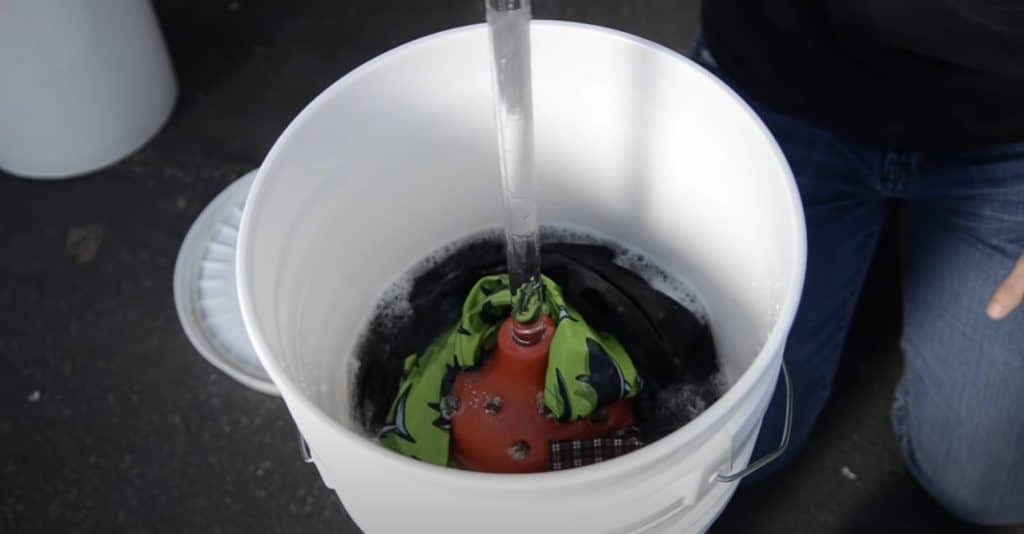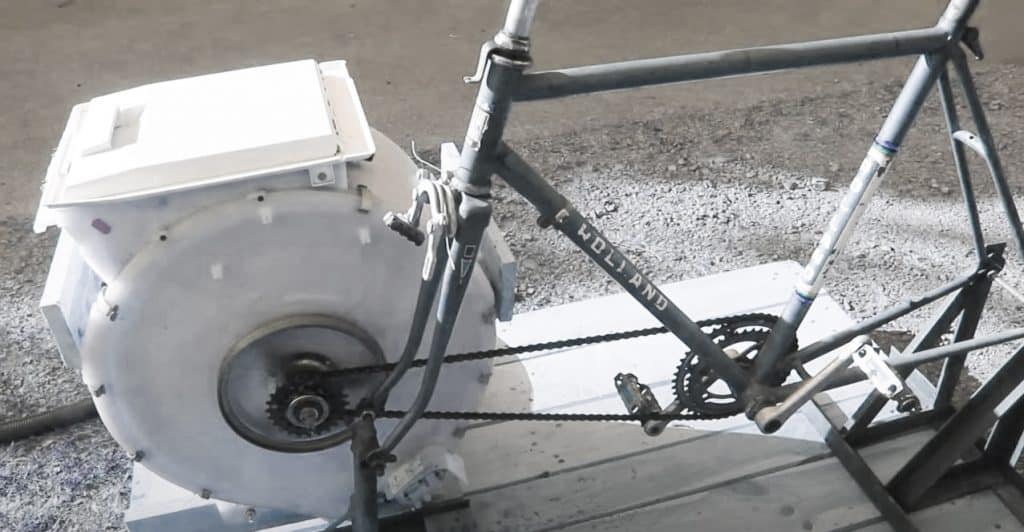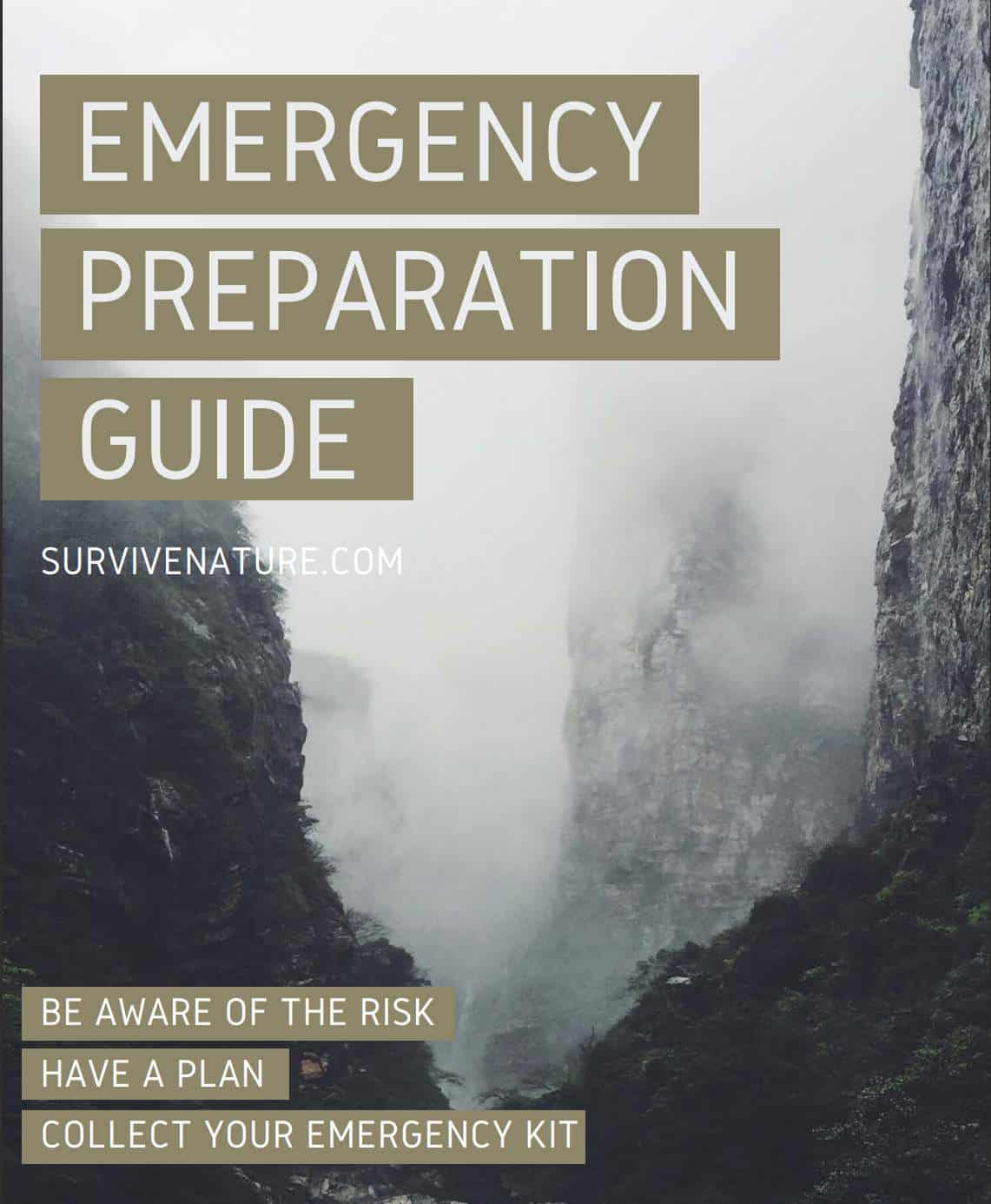No matter whether you love camping or have a country house without electricity in the woods, especially in 2023, in both cases there is an enormous opportunity that you will need to wash your clothes. Having your garments clean is not only about looking good, it is also about keeping the microclimate of your body controlled. Having clean clothing also helps to maintain better motivation to continue moving forward during a hiking trip.
However, it is not always possible to wash dirty clothes since there is no electricity but washing clothes in a bucket with soap is not enough. In this situation, you definitely need to know how to create a washing machine from improvised means and easy tools.
In this article, you will know how to replace laundry service and electric washing machines with a DIY homemade washing machine that does not require a motor or electricity.
Use our survival preparation guide to learn more and be absolutely prepared for an emergency that may arise.
Bucket Clothes Washer

During a homestead situation or just in case you want to expand your survival skills, here are the things you will need to make a bucket washer by yourself:
- drill
- round hole bit or spade bit and a general-purpose bit
- plunger
- two 5-gallons buckets with a lid (you may also use trash tanks)
A step-by-step instruction starts with drilling holes in the bottom and the sides of one bucket, but do not make them too big and too close to each other. Later, you will place this pail inside another one, so this one will take all the pressure from the washing process. So, the second bucket holds the water while the inner one creates power for the circulation of water that actually makes the clothes clean.
Drill approximately the same holes in the plunger so that it will spin the water too. Note that many plungers are too weak for washing heavy clothes and are suitable for cleaning shorts and blouses. A good tip for increasing the effectiveness of a plunger is to replace it with a wooden handle with a finned firebrand.
Take the bucket lid and make a hole in it so it accurately fits the diameter of the plumber with a small gap. Make sure that the plunger can easily move in it and there is not so much spare space. As a result, you get a working laundry made by yourself. There is a drum in the heart of the mechanism that empowers the washing process. All you have to do is push and pull the plunger and rinse water with a used detergent.
Pay attention to the fact that these tools are likely to wear with time, so it is a great solution to change or strengthen them from time to time.
Bicycle-Powered DIY Washing Machine

Another kind of DIY washing machines is one that is based on the pedal power gained by the bicycle that connects the so-called machine to the bicycle. You heard right: it is possible to wash clothes and ride a bike at the same time, so you do combine business with pleasure.
Needed tools:
- bicycle or pedals with a chain
- bucket washing machine
- wooden planks
- thin wooden pole
You need to permeate the top and bottom of the bucket of the DIY washing machine in parallel points in the centers of the surfaces. Create a holding construction from the planks. It should hold the pole from the two sides. It should look like you are going to roast the bucket at the stake.
Place the bicycle so that its chain is connected to the spinning tub. When you will spin the pedals, the bike will not move but the chain will spin the bucket and make the water mix with detergent and wash clothes.
Another way of using a bicycle to make your clothes clean is to create the same mechanism from your old washing machine. Make the holes in its center and connect the pole with the drum of the washier. The more power you give to the pedals, the more efficient the laundry will be.
You can watch the following video to see how this mechanism should work.
Avoid large loads in a pedal-powered washing machine since a larger weight of clothes will require harder legwork. Also, remember that you will have to spin water in the round pail which is completely not an easy deal.
Hand-Operated DIY Washing Machine
This is the most traditional method of creating a self-made own washing machine. Its working mechanism can be clearly understood by just looking at it. The main idea here is again the pressing and spinning motion in the center of the washer.
Needed tools:
- a hand crank
- DIY washer
All you have to do in this case is to place a homemade machine into a bigger pail that has a hand crank connected to its side. It works as a motor here since it spins the inner pail, while the outer one works as a lid and is made to rinse water.
It is probably the easiest and most useful kind of DIY washing machine which can clean clothes in various conditions. You can use it both for business and camping needs since it can allow a big load and save money and energy.
Tiny House Washing Machine
Since the Tiny House movement is gaining more and more popularity nowadays, it is a great idea to try creating a homemade washing machine that can clean clothes without using electricity or leaving a carbon footprint. When making a large laundry load in usual laundries, it harms the planet much. But when making laundry in a DIY washing machine, nothing bad will ever happen. Moreover, you will practice physical activity and maybe even deliver the idea of ecological consumption to other people.
It is also a way to decrease the cost of laundry for you. Instead of spending loads on wasted water, you can use your own-made washer and a hand or pedal power.
Camping Laundry Tips
In conclusion, there are some tips that may be useful while on a camping trip:
- Use solar power as a dryer when you have enough time, but do not leave wet clothes while it is cool outside.
- Rinse water from the DIY washer and rotate the clothes here without water, so it will provide a spin-dry for the clothes.
- Do not use hot water in a DIY washer since it may harm the pail. Moreover, the cold water removes dirt better.
- Do not remember to change the water after 2-3 cycles, also add new dozen of soap or detergent.
- Wash the least dirty clothes firstly and leave the dirtiest ones for the end, after washing socks and underwear.
Have a look at our essential gear list to be absolutely sue you won’t miss a thing while preparing for survival!
Frequently Asked Questions – FAQ
How Do You Make a Non-Electric Washing Machine?
There exist several methods of making a non-electric DIY washing machine. The essential knowledge is that you need two pails and a pole with holes in it. By pushing it into the holey pail with water and clothes, the pressure cleans the clothes. Later, you can use this as a base for other kinds of washers.
What do I Need to Build an Off-Grid Washing Machine?
You only need the instruments that are found in almost every home. These are two big pails, a drill, and a plunger. You need to make holes in the plunger and one pail, place it into the bigger one and make some pushes.
Is It Safe to Use a DIY Washing Machine?
It is absolutely safe and ecological to use DIY washers since they do not leave any carbon footprint and do not require any recycling activities after usage.
Does It Require Fuel or Electricity?
A non-electric washer does not need electricity or other power to be used. It only requires your physical abilities to be applied to the process, so that the impulse can rotate the drum of the handmade machine.


